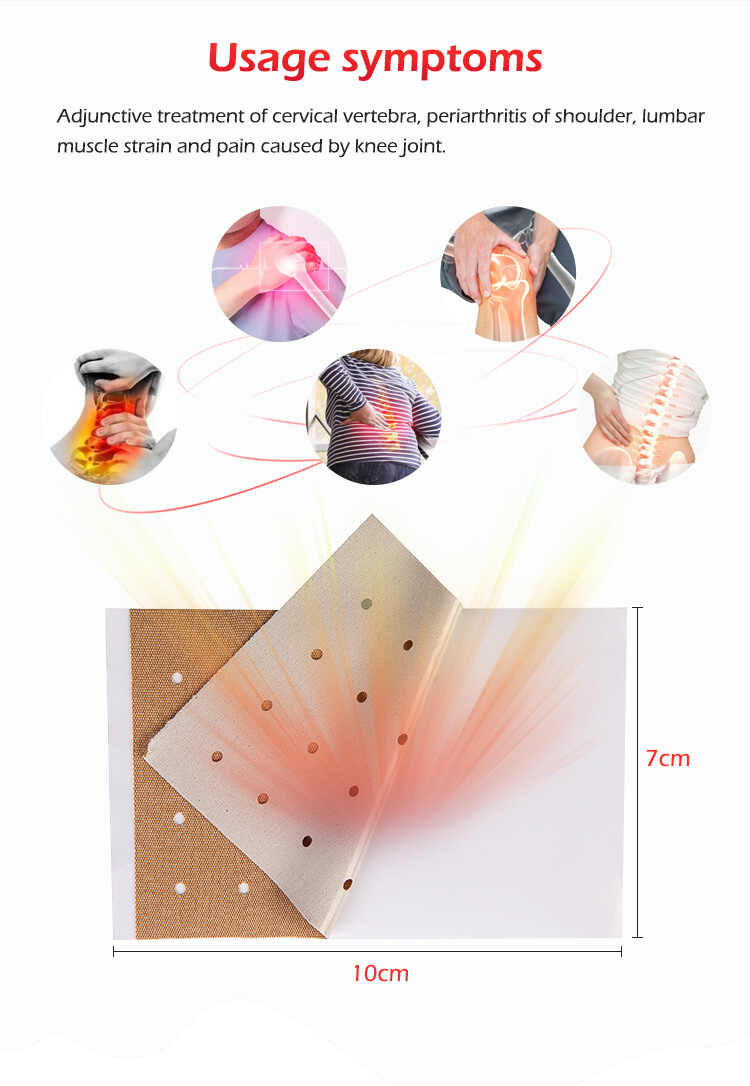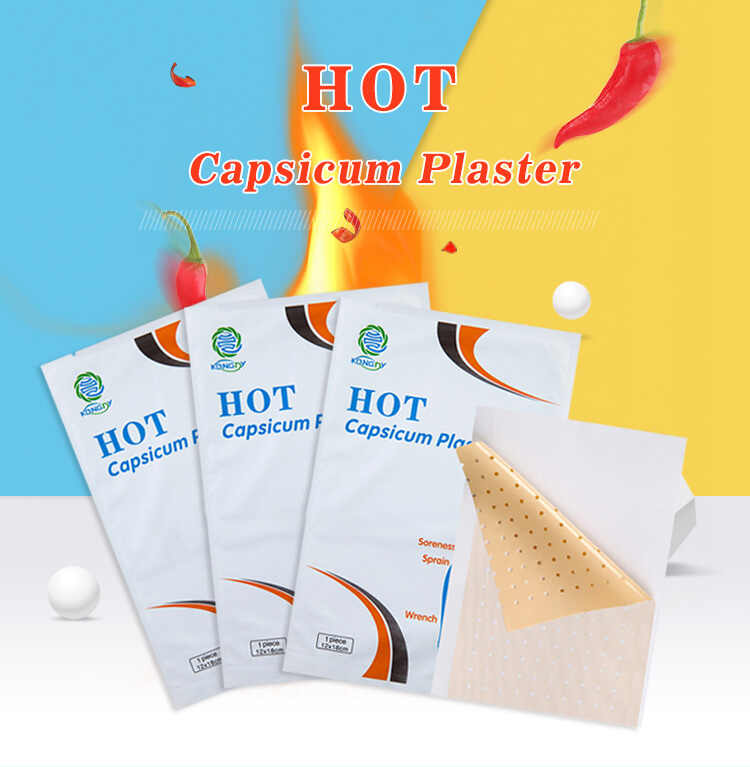Sustainable Practices in Capsicum Pain Relief Plaster OEM Manufacturing: A Responsible Path to Market Leadership
As global awareness of environmental impact grows, consumers and businesses alike are demanding more eco-friendly products. In the wellness and medical patch industry, this shift toward sustainability is not just a trend—it’s a necessity. For companies working with a Capsicum Pain Relief Plaster OEM, integrating sustainable practices throughout the production process can significantly enhance brand value, market differentiation, and long-term profitability.
In this article, we will explore how leading Capsicum Pain Relief Plaster Manufacturers are adopting sustainable methods—from raw material sourcing to packaging and waste reduction. We’ll also discuss why choosing a sustainable Capsicum Pain Relief Plaster Supplier is not only an ethical choice but also a strategic business decision. Finally, we’ll provide actionable questions and answers to help you evaluate sustainability in OEM partnerships.

1. Why Sustainability Matters in OEM Manufacturing
Sustainability in Capsicum Pain Relief Plaster OEM production isn’t just about being “green.” It represents:
Responsibility to future generations
Compliance with stricter environmental regulations
Appeal to eco-conscious consumers
Cost savings through energy and resource efficiency
Reduced carbon footprint across the supply chain
By selecting a sustainable Capsicum Pain Relief Plaster Manufacturer, you demonstrate environmental accountability and enhance your brand’s trust and visibility in competitive markets.
2. Key Areas of Sustainable OEM Practices
2.1 Responsible Sourcing of Ingredients
Sustainable OEMs use ethically and responsibly sourced ingredients, including:
Natural capsaicin extract from non-GMO chili plants
Biodegradable adhesive bases
Organic and cruelty-free herbal additives like menthol or ginger
Working with such a Custom Capsicum Pain Relief Plaster OEM ensures your product starts clean, right from its raw materials.
2.2 Eco-Friendly Manufacturing Processes
Eco-conscious Capsicum Pain Relief Plaster Manufacturers invest in:
Energy-efficient machinery
Water recycling systems
Low-emission production techniques
Some manufacturers also operate solar-powered facilities or use renewable energy sources to reduce dependence on fossil fuels.
2.3 Minimal Waste and Recycling
Sustainable OEMs reduce their environmental impact by:
Implementing zero-waste-to-landfill policies
Recycling off-cuts and packaging waste
Using non-toxic solvents and adhesives
These practices lower production costs over time and contribute to a cleaner ecosystem.
2.4 Sustainable Packaging Solutions
Many Private Label Capsicum Pain Relief Plaster solutions now feature:
Recyclable, compostable, or biodegradable packaging
Minimalist design to reduce material usage
Soy-based or water-based inks for eco-friendly printing
Ask your Capsicum Pain Relief Plaster Supplier about their sustainable packaging capabilities—today’s consumers notice and appreciate the effort.
3. Certifications That Reflect Sustainability
Reputable Capsicum Pain Relief Plaster OEM companies will often hold sustainability certifications, such as:
ISO 14001: Environmental Management System
GOTS (Global Organic Textile Standard)
FSC (Forest Stewardship Council) for packaging
REACH and RoHS compliance for chemical safety
These demonstrate a measurable commitment to environmental and human health protection.
4. Custom Sustainability Solutions for Your Brand
If you're building a unique offering, a Custom Capsicum Pain Relief Plaster OEM with sustainability in mind can help you:
Formulate vegan or organic patches
Eliminate petroleum-based materials
Certify your finished product with eco-labels
Such innovation not only aligns with your sustainability goals but positions your brand as a forward-thinking leader in pain relief solutions.
5. Benefits of Partnering with a Sustainable OEM
✅ Stronger Brand Reputation
Modern consumers—especially Gen Z and Millennials—are loyal to ethical brands. Sustainability builds credibility and long-term customer relationships.
✅ Regulatory Compliance
Environmental laws are becoming stricter worldwide. A sustainable Capsicum Pain Relief Plaster Manufacturer helps ensure your products comply with evolving regulations.
✅ Lower Operational Costs
Efficient energy, water use, and waste management can reduce manufacturing costs—savings that may be passed on to you.
✅ Competitive Edge
Eco-friendly Private Label Capsicum Pain Relief Plasters stand out on shelves and e-commerce platforms, especially with certifications or green packaging.
6. Key Features to Look for in a Sustainable OEM Partner
To evaluate the sustainability of a Capsicum Pain Relief Plaster Supplier, consider the following:
Do they use renewable energy or offset carbon emissions?
Can they provide traceability of raw materials?
Are their adhesives skin-friendly and biodegradable?
Do they offer eco-friendly packaging materials?
Do they share annual sustainability reports or goals?
Always verify through documentation and third-party certifications.
7. Case Study: Sustainability-Driven Brand Growth
Case: A North American wellness brand partnered with an eco-conscious Capsicum Pain Relief Plaster OEM offering solar-powered manufacturing and biodegradable packaging.
Results:
40% increase in customer retention due to transparent sustainability
Retail placement in organic/natural product chains
Qualification for eco-labels and export to Europe under strict EU green guidelines
This demonstrates how sustainability can drive both purpose and profit.
8. OEM Sustainability and Innovation Go Hand in Hand
Sustainable OEMs often lead in innovation by:
Creating biodegradable film backings
Using plant-based adhesives
Incorporating cooling and heating agents from natural sources
When choosing a Custom Capsicum Pain Relief Plaster OEM, ask how they’re innovating to reduce ecological impact.
9. Long-Term Partnership with a Green OEM: What to Expect
Building a long-term relationship with a sustainable Capsicum Pain Relief Plaster Manufacturer provides:
Consistency in ethical practices and quality
Co-development of green product lines
Joint branding opportunities with eco-certifications
These benefits extend beyond product manufacturing and into co-marketing and shared consumer trust.
Conclusion
Sustainability in Capsicum Pain Relief Plaster OEM manufacturing is more than an environmental concern—it’s a strategic imperative. From ingredient sourcing and eco-friendly production to green packaging and compliance, your choice of OEM impacts your brand's environmental footprint, consumer perception, and future viability.
Whether you need a Custom Capsicum Pain Relief Plaster, are launching a Private Label line, or sourcing bulk from a certified Capsicum Pain Relief Plaster Supplier, prioritize sustainability to lead in today’s conscientious market.
Related Questions and Answers
Q1: Why is sustainability important in Capsicum Pain Relief Plaster OEM production?
A1: It ensures environmental responsibility, regulatory compliance, cost efficiency, and enhances brand image in eco-conscious markets.
Q2: Can I request biodegradable materials for Custom Capsicum Pain Relief Plasters?
A2: Yes. Many OEMs now offer plant-based adhesives and compostable packaging for fully sustainable solutions.
Q3: What certifications should a sustainable Capsicum Pain Relief Plaster Manufacturer have?
A3: ISO 14001, FSC, REACH, RoHS, and GOTS certifications indicate strong sustainability practices.
Q4: Do sustainable practices increase production costs?
A4: Initially, some eco-friendly options may cost more, but long-term benefits like energy savings and customer loyalty often outweigh the costs.
Q5: How can Private Label Capsicum Pain Relief Plasters reflect sustainability?
A5: Through green packaging, clean labeling, cruelty-free formulation, and eco-certifications, enhancing your brand’s environmental appeal.
Q6: Are there Capsicum Pain Relief Plaster Suppliers that ship sustainably?
A6: Yes. Some OEMs use carbon-neutral logistics partners, recyclable shipping materials, and optimize packaging size to reduce emissions.






